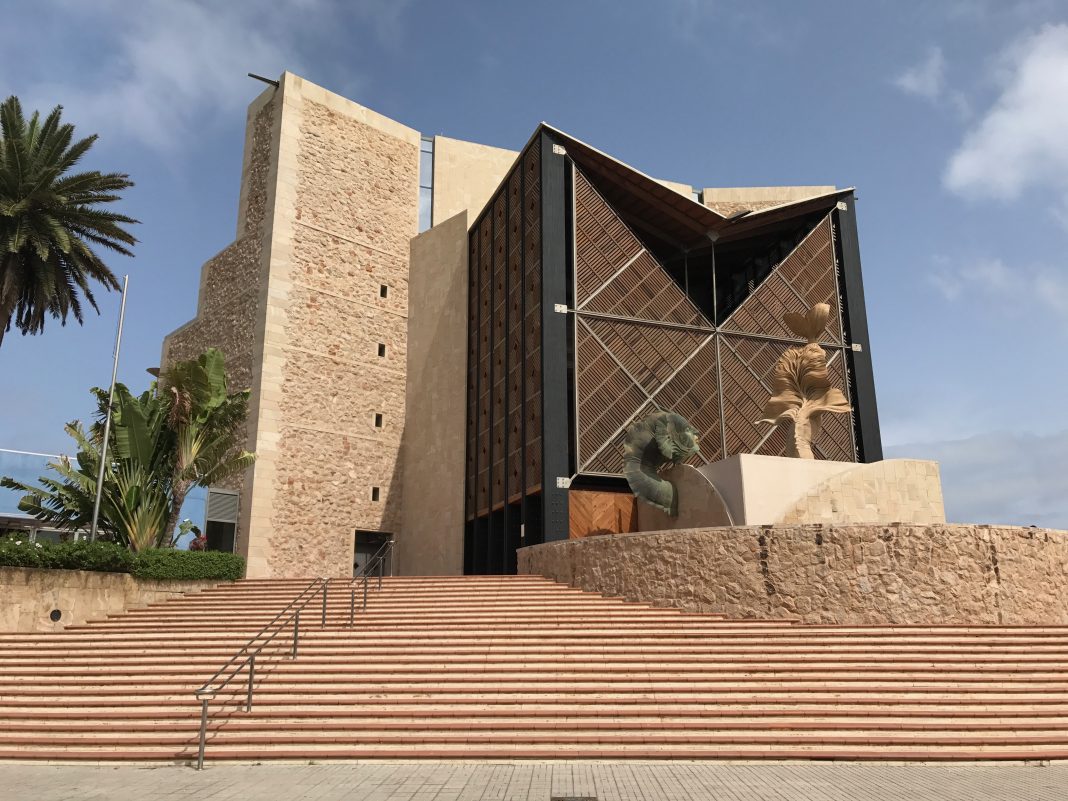As regular readers may remember, I started playing the violin again last year. In fact, I became so enthusiastic that I started teaching myself to play the viola and cello as well. Sometimes it is a painful and painstaking process, and I would not inflict my efforts upon any listener. However, I do enjoy listening to stringed instruments, and in particular, being played by those who really do know how to make their instruments sing.
Last week, I was fortunate to be able to attend a concert given by the Gran Canaria Philharmonic Orchestra. Most tourists, and indeed many residents, remain unaware that we have our own world class orchestra on this island. There are regular concerts advertised and I can highly recommend making the effort to travel to the Alfredo Kraus Auditorium in Las Palmas for the evening; it is a delightful and impressive experience.
I particularly enjoy visiting the Alfredo Kraus Auditorium in Las Palmas. It has often been described as “A Beacon of Culture”, which it is in so many symbolic ways. Looking at the impressive building as it stands on Las Canteras beach is just a start. For me, the true magic begins inside the building when looking at the orchestra seated in front of a huge picture window with an incredible view of the Atlantic Ocean outside.
Visitors to the concert can watch waves crashing and lights twinkling on the water outside, which creates an evocative and memorable experience when listening to the music being played by this exceptional orchestra. The Alfredo Kraus Auditorium was built as a beacon for opera, music and ballet in the Canary Islands. However, who was Alfredo Kraus?
Alfredo Kraus Trujillo was born in Las Palmas on 24 September 1927 – the son of a Spanish naturalised Austrian. Alfredo began piano lessons at the age of four and after completing secondary education he studied industrial engineering. Soon after graduation, Kraus began to concentrate more and more on singing, which he studied in Barcelona, Madrid and later Italy.
Alfredo Kraus made his operatic debut as the Duke of Mantua in Giuseppe Verdi’s Rigoletto in Cairo, in January 1956. He then appeared in La Traviata in Venice, Turin and London, and in 1958 made his first appearances in Rome and Lisbon. Kraus quickly developed into a world class tenor, starred in a movie based on the life of Gayarre, an early famous Spanish tenor, and became a frequent and well-respected performer at the world’s most prestigious opera houses, singing with Maria Callas, Joan Sutherland and other world-renowned sopranos.
The last two years of Kraus’s life were darkened by the death of his wife in 1997, which affected him deeply. A proud and strong-willed man, he eventually returned to the stage and to teaching, making the comment, “Singing is a form of admitting that I’m alive.”
In 1991, Kraus was awarded the Prince of Asturias Award. In 1997, his home city of Las Palmas opened the Alfredo Kraus Auditorium in his honour. Kraus died on September 10, 1999 in Madrid, at the age of 71, after a long illness.
The music of Strauss and Mahler soothed my ears and made me forget the world outside. I felt inspired by watching the professionals playing their violins, violas and cellos with such enthusiasm and grace. During my next practice sessions, I will try harder.
If you are visiting or live on the island, I strongly recommend a visit to the auditorium and, better still, to experience a concert given by the Gran Canaria Philharmonic Orchestra. Link this to a good meal in one of the many nearby restaurants, and I suspect that you too will have a most enjoyable evening that you will remember for a long time to come.
If you enjoyed this article, take a look at Barrie’s websites: http://barriemahoney.com and http://thecanaryislander.com or read his latest book, ‘Footprints in the Sand’ (ISBN: 9780995602717). Available in paperback, as well as Kindle editions.
Join me on Facebook: @barrie.mahoney
© Barrie Mahoney





